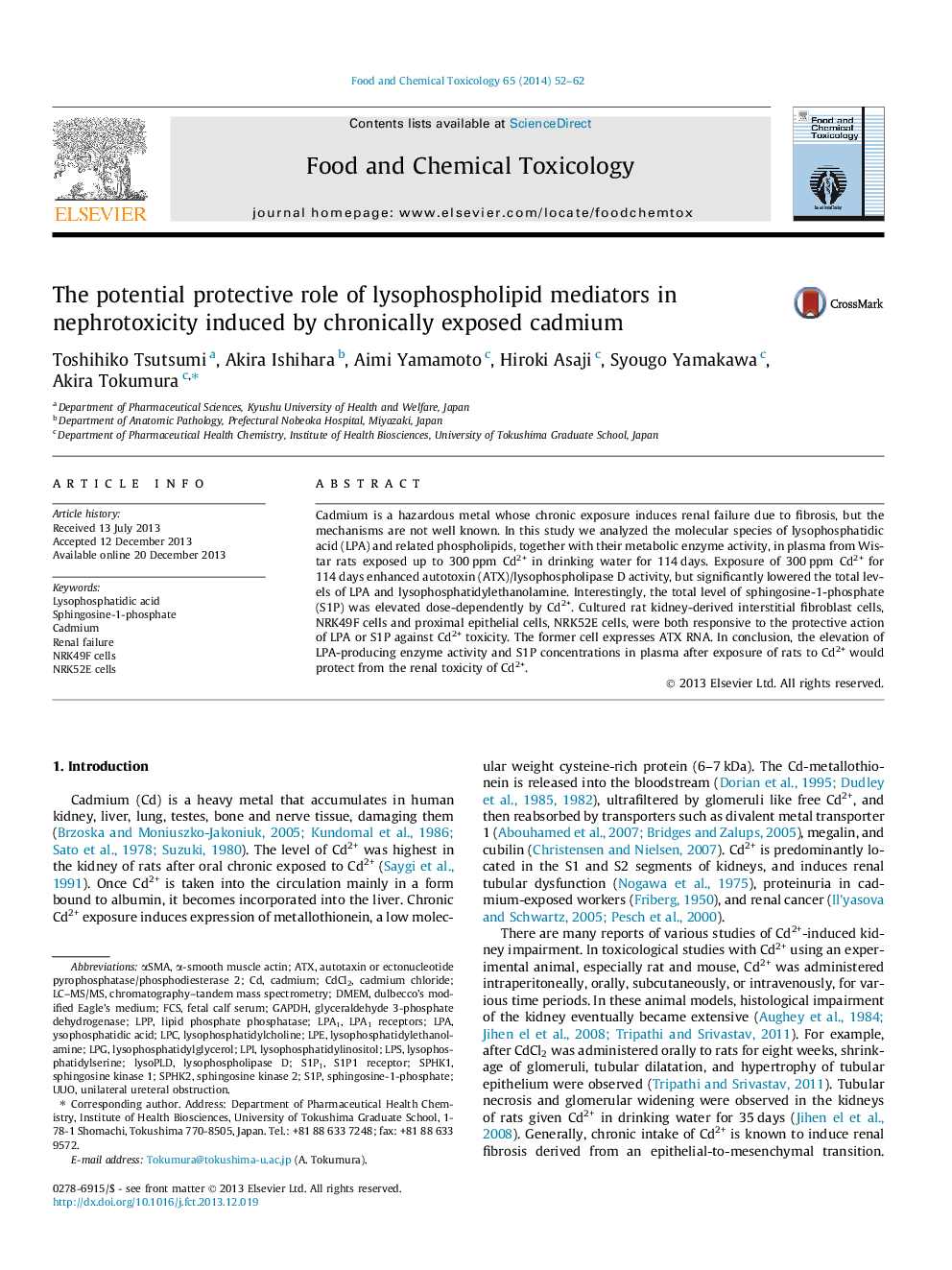| Article ID | Journal | Published Year | Pages | File Type |
|---|---|---|---|---|
| 5850619 | Food and Chemical Toxicology | 2014 | 11 Pages |
Abstract
Cadmium is a hazardous metal whose chronic exposure induces renal failure due to fibrosis, but the mechanisms are not well known. In this study we analyzed the molecular species of lysophosphatidic acid (LPA) and related phospholipids, together with their metabolic enzyme activity, in plasma from Wistar rats exposed up to 300Â ppm Cd2+ in drinking water for 114Â days. Exposure of 300Â ppm Cd2+ for 114Â days enhanced autotoxin (ATX)/lysophospholipase D activity, but significantly lowered the total levels of LPA and lysophosphatidylethanolamine. Interestingly, the total level of sphingosine-1-phosphate (S1P) was elevated dose-dependently by Cd2+. Cultured rat kidney-derived interstitial fibroblast cells, NRK49F cells and proximal epithelial cells, NRK52E cells, were both responsive to the protective action of LPA or S1P against Cd2+ toxicity. The former cell expresses ATX RNA. In conclusion, the elevation of LPA-producing enzyme activity and S1P concentrations in plasma after exposure of rats to Cd2+ would protect from the renal toxicity of Cd2+.
Keywords
DMEMLysoPLDS1P1αSMALPAATXFCSLPA1CdCl2lysophosphatidylethanolamineLPELPCLPILPPGAPDHLPSLPGLC–MS/MSα-smooth muscle actinfetal calf serumLysophosphatidylcholinelysophosphatidylglycerolLysophosphatidylserinelysophospholipase DLysophosphatidylinositolLipid phosphate phosphataseDulbecco’s modified eagle’s mediumCadmiumCadmium chlorideglyceraldehyde 3-phosphate dehydrogenase
Related Topics
Life Sciences
Agricultural and Biological Sciences
Food Science
Authors
Toshihiko Tsutsumi, Akira Ishihara, Aimi Yamamoto, Hiroki Asaji, Syougo Yamakawa, Akira Tokumura,
